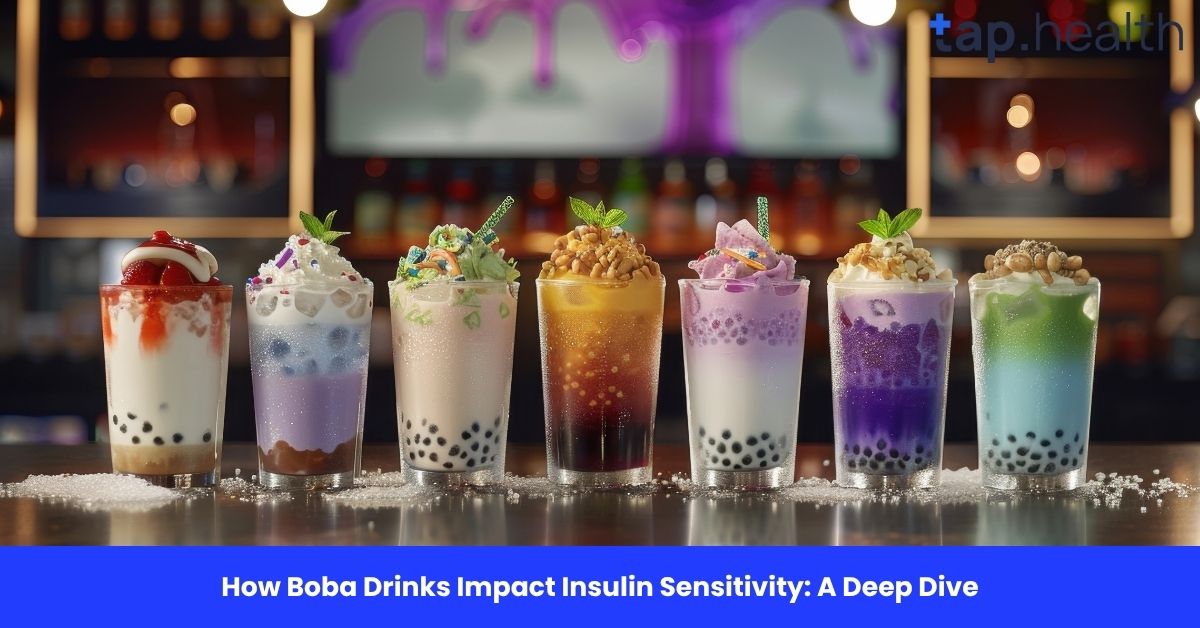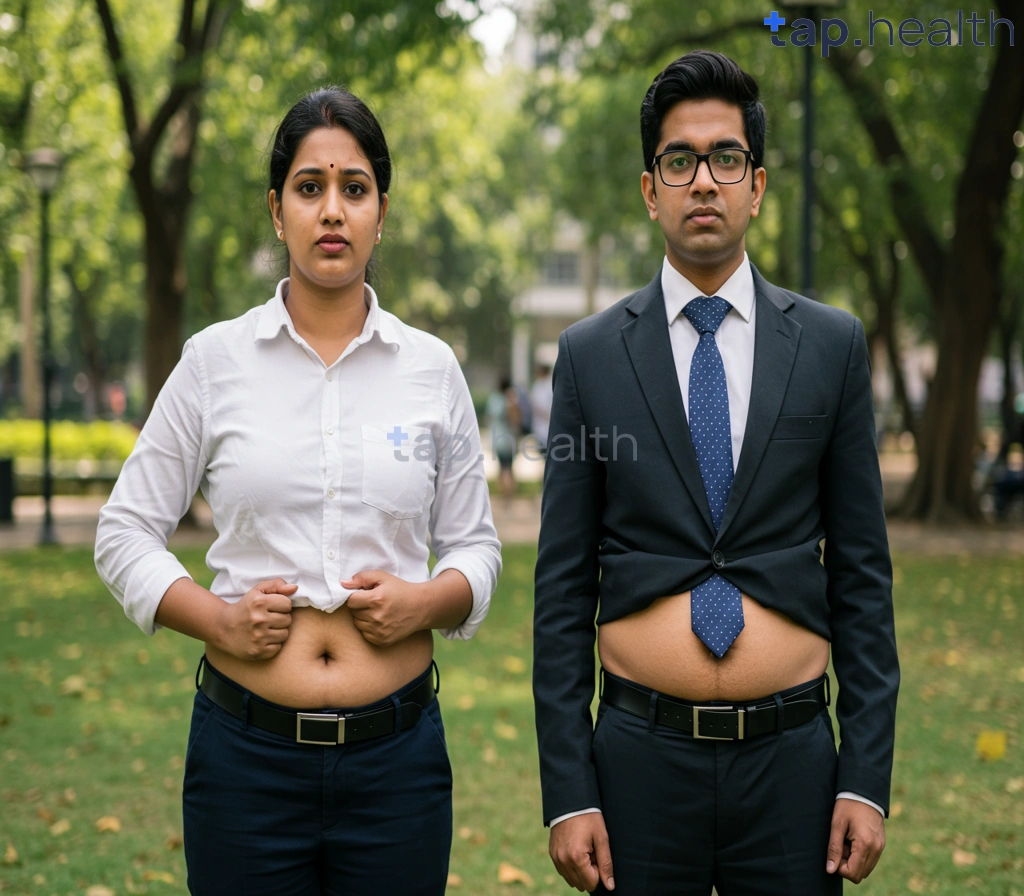Boba drinks, also known as bubble tea, have gained immense popularity worldwide for their unique blend of tea, sweeteners, and chewy tapioca pearls. While these drinks are a delightful treat for many, there are concerns about how they may affect insulin sensitivity, especially for individuals with diabetes or those trying to manage their blood sugar levels.
In this article, we’ll explore how boba drinks impact insulin sensitivity, what ingredients to watch out for, and whether they’re a safe option for those managing diabetes. We’ll also discuss how to make boba drinks healthier and provide expert insights into the best choices for maintaining optimal health.
What Are Boba Drinks?
Boba drinks originated in Taiwan and have since become a global sensation. These drinks typically consist of sweetened tea, milk (or a milk substitute), and chewy tapioca pearls. The pearls, which are made from tapioca starch, are cooked and sweetened, giving them a soft, gummy texture.
Common Types of Boba Drinks
- Milk Tea: A classic boba drink that combines black or green tea with milk and sweetener.
- Fruit Tea: A lighter option with fruit juices or purees, sometimes with boba pearls added for texture.
- Smoothies: Blended drinks that often feature fruits, yogurt, or other creamy additives with boba pearls.
- Flavoured Boba: These include variations like matcha, taro, or chocolate boba, where the base drink is flavoured differently.
Ingredients in Boba Drinks
- Tea: The base of most boba drinks. It’s often black, green, or oolong tea.
- Milk or Non-Dairy Alternatives: Depending on the recipe, this could be cow’s milk, almond milk, oat milk, or coconut milk.
- Sweeteners: Sugar, honey, or syrups (like brown sugar syrup) are used to sweeten the drink.
- Tapioca Pearls: Made from tapioca starch, these chewy pearls are a major component of the drink.
- Additional Additives: Some boba drinks may contain jelly cubes, popping boba, or pudding for added texture.
Nutritional Profile of Boba Drinks
Before we dive into how boba drinks impact insulin sensitivity, it’s important to understand their nutritional makeup. The typical serving size of a boba drink is around 16–20 ounces (475–590 ml), though some large servings may contain more than 400 calories.
Here’s a breakdown of the nutritional content for a 16-ounce serving of a standard milk tea with boba pearls (without any additional toppings):
- Calories: 200–400 kcal (depending on sugar content and milk choice)
- Carbohydrates: 40–60g (largely from sugars and tapioca pearls)
- Sugars: 30–50g (from sweeteners and tapioca pearls)
- Protein: 2–5g (from milk or milk substitute)
- Fat: 5–10g (depending on milk type)
- Fiber: 0–2g (from tapioca pearls)
As you can see, boba drinks tend to be high in sugars and carbohydrates, both of which can affect insulin sensitivity.
Read this : How Many Calories in Boba? Full Nutritional Breakdown
How Do Boba Drinks Affect Insulin Sensitivity?
Insulin sensitivity refers to how effectively the body responds to insulin, a hormone that helps regulate blood sugar. Poor insulin sensitivity (insulin resistance) is a hallmark of type 2 diabetes and can make it harder for the body to control blood sugar levels.
1. High Sugar Content and Insulin Sensitivity
The high sugar content in boba drinks can directly impact insulin sensitivity. When you consume sugary foods or beverages, your body releases insulin to help manage the sugar in your bloodstream. Over time, consuming too much sugar can lead to insulin resistance, where the body’s cells no longer respond as effectively to insulin. This results in higher blood sugar levels, which can eventually lead to diabetes.
Boba Drink’s Sugar Impact:
- A standard boba drink can contain up to 50 grams of sugar, which is about 12 teaspoons of sugar. This amount exceeds the daily recommended sugar intake for adults, especially those with diabetes.
- Sugary drinks, like boba milk tea, can cause rapid spikes in blood sugar levels, making them a concern for individuals with insulin resistance or pre-diabetes.
2. Tapioca Pearls and Glycemic Index
Tapioca pearls, the key ingredient in most boba drinks, have a high glycemic index (GI), meaning they can cause a rapid increase in blood sugar after consumption. High-GI foods are known to elevate blood glucose levels more quickly than foods with a low GI, which can worsen insulin resistance.
Impact of Tapioca Pearls on Blood Sugar:
- Tapioca pearls are made primarily from starch, which is quickly converted into glucose in the body, leading to a sharp rise in blood sugar.
- When consumed in large amounts, they contribute to insulin spikes and can worsen insulin sensitivity, especially when paired with other high-glycemic ingredients like sweeteners and milk.
3. Milk and Insulin Sensitivity
While milk (whether cow’s milk or plant-based alternatives) contains protein and calcium, it also contains lactose (milk sugar), which can contribute to a rise in blood sugar. For people with diabetes, managing carbohydrate intake is essential, and milk in large amounts could be problematic, especially in sweetened boba drinks.
4. Calories and Weight Gain
Another concern with boba drinks is their high calorie content, which, if consumed regularly, can contribute to weight gain. Excess body fat, especially abdominal fat, can worsen insulin resistance and lead to the development of type 2 diabetes.
For individuals with diabetes or those trying to maintain a healthy weight, boba drinks can be a poor choice if consumed frequently. Managing calorie intake is crucial for maintaining healthy blood sugar levels.
Are Boba Drinks Safe for People with Diabetes?
If you’re managing diabetes or insulin resistance, it’s important to be mindful of the sugar, carbohydrates, and calories in boba drinks. Here’s what you should know:
1. Occasional Consumption
For most people with diabetes, occasional consumption of a low-sugar, smaller-sized boba drink may be fine, especially if paired with a meal that helps stabilize blood sugar levels. However, frequent consumption can contribute to insulin resistance and poor blood sugar control.
2. Low-Sugar or Sugar-Free Options
Some boba shops offer sugar-free or low-sugar options for those who are concerned about their blood sugar levels. Choosing these alternatives can help reduce the impact of the drink on insulin sensitivity, but it’s still important to monitor overall carbohydrate intake.
3. Portion Control
The key to including boba drinks in a diabetes-friendly diet is portion control. Opting for a small size and low-sugar variants can help mitigate the effects on insulin sensitivity.
Healthier Alternatives to Traditional Boba Drinks
If you enjoy boba drinks but are concerned about their impact on insulin sensitivity, here are a few ways to make them healthier:
1. Opt for Sugar-Free or Low-Sugar Versions
Look for boba shops that offer sugar-free syrups or low-calorie sweeteners like stevia or monk fruit. This will reduce the sugar content while still providing the sweetness you crave.
2. Choose Unsweetened Milk Alternatives
Instead of full-fat milk or sweetened dairy milk, try using unsweetened almond milk, coconut milk, or oat milk. These milk substitutes are lower in sugar and calories, making them a better choice for blood sugar control.
3. Reduce Tapioca Pearls
Tapioca pearls are the main contributor to the high glycemic index of boba drinks. Reducing the amount of pearls or opting for alternatives like chia seeds, grass jelly, or popping boba (which often have a lower glycemic index) can make the drink a bit healthier.
4. Add More Nutrient-Dense Ingredients
Consider adding nutrient-dense ingredients like chia seeds, flaxseeds, or spices such as cinnamon to help lower the glycemic impact of the drink.
Key Takeaways
- Boba drinks can have a significant impact on insulin sensitivity due to their high sugar content, carbohydrates, and the glycemic index of tapioca pearls.
- Regular consumption of sugary boba drinks can contribute to insulin resistance and worsen blood sugar control in people with diabetes.
- Smaller, low-sugar options with reduced tapioca pearls and unsweetened milk alternatives can make boba drinks a healthier choice for those managing blood sugar.
- Portion control and moderation are key when consuming boba drinks to reduce their impact on insulin sensitivity.
Frequently Asked Questions (FAQs) on How Boba Drinks Impact Insulin Sensitivity
Q1: Can boba drinks cause insulin resistance?
A1: Yes, boba drinks can contribute to insulin resistance due to their high sugar content and high glycemic index of tapioca pearls. Regular consumption may worsen blood sugar control.
Q2: Are there low-sugar boba drink options?
A2: Yes, many boba shops offer low-sugar or sugar-free options, often using sugar substitutes like stevia or monk fruit to reduce the impact on blood sugar.
Q3: How can I make boba drinks healthier?
A3: To make boba drinks healthier, opt for unsweetened milk substitutes, low-sugar syrups, and reduce tapioca pearls. Adding chia seeds or flaxseeds can also help improve the nutritional profile.
Q4: Are boba drinks safe for diabetics?
A4: Boba drinks can be consumed occasionally by diabetics, but portion control and choosing low-sugar options are crucial to manage blood sugar levels.
Q5: How does the sugar in boba drinks affect blood sugar levels?
A5: The high sugar content in boba drinks can cause rapid spikes in blood sugar, which can affect insulin sensitivity and contribute to insulin resistance over time.
Q6: How many carbs are in a typical boba drink?
A6: A typical boba drink can contain 40–60 grams of carbohydrates, most of which come from sugars and tapioca pearls.
Q7: Can I drink boba if I have insulin resistance?
A7: If you have insulin resistance, it’s best to limit boba drink consumption due to its high sugar and carbohydrate content. Opting for low-sugar versions and reducing portions can help mitigate the effects.
Q8: Can I drink boba every day?
A8: While it’s not recommended to drink boba every day, occasional consumption of low-sugar, smaller-sized boba drinks may be fine, provided it’s balanced with a healthy diet.



